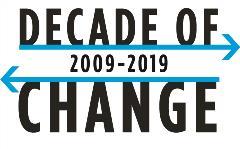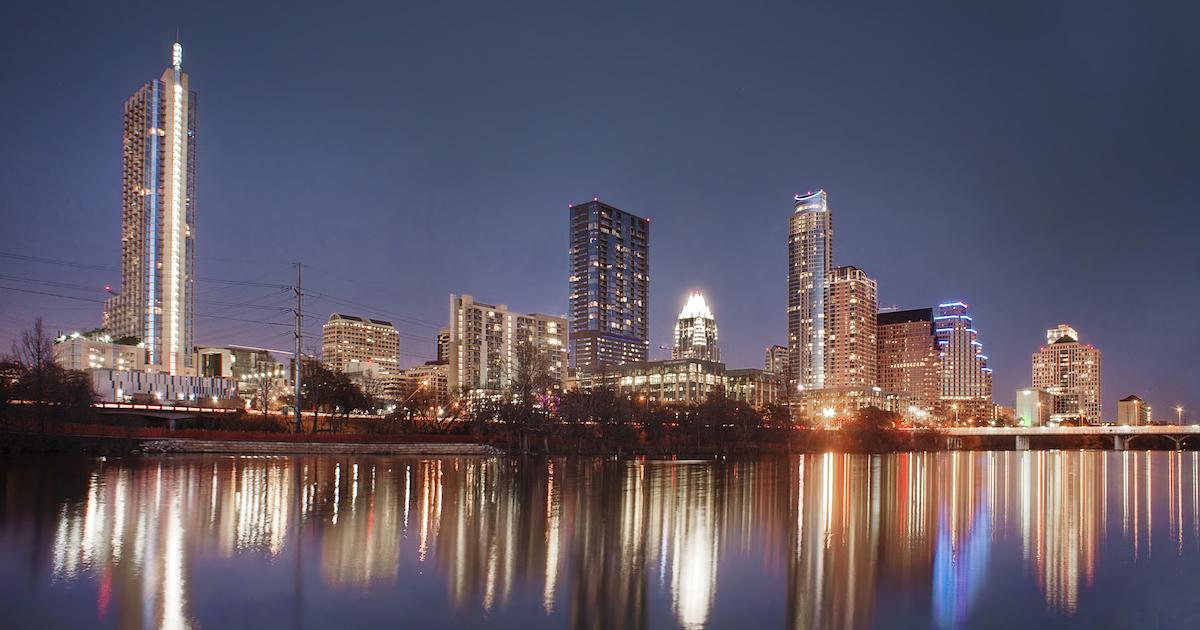Photo by Katie Haugland Bowen
Follow The Meeting Professional throughout the year as we examine meeting and event industry milestones and challenges over the past decade.

Most people outside Texas think of Austin when the state’s name is spoken. This is due in part to some great marketing, but over the past 10 years it has more to do with the city’s business and technological growth. Every year, more companies are either relocating operations to or opening regional hubs in the state’s capital.
Cindy Y. Lo, DMCP (MPI Texas Hill Country Chapter), believes companies are attracted to Austin for several reasons.
“One, we are right in the middle of the U.S., so working with both coasts makes it very easy to set schedules,” says Lo, president and event strategist for Austin-based Red Velvet Events Inc. “Two, there is a very low barrier of entry to start and run a business in Texas, let alone Austin. And three, we have a great university in our backyard, which means a high probability of staffing jobs that require entry level with education.”
With these companies come people. Lots of people. According to the U.S. Census Bureau, Austin’s population has grown by 18 percent since 2010, making it the second-fasting-growing city (behind Seattle) in the U.S.
“Austin grows by nearly 150 people per day,” says Elizabeth Alderson (MPI Texas Hill Country Chapter), chief experience officer for Austin Detours. “Our tech scene has brought an enormous influx of talented folks from all over the world, which has driven our economic growth. We have pro-business policies that make Texas an attractive place to do business, and Austin specifically is very supportive of entrepreneurship.”
A Place to Meet
If people aren’t living in Austin, then they’re visiting. The city plays host to events small and large every year—such as the Austin City Limits Music Festival, the Texas Book Festival and South by Southwest—that attract millions of attendees. In fact, 27.4 million people visited the greater Austin area in 2017.
“We started to see more companies wanting to come to Austin to host their meeting because they were looking for a fresh perspective and not your typical big-city conference option,” Lo says. “Austin has a very walkable downtown, so bringing in groups to have their meetings at either the convention center or one of our many hotels allows them to have an authentic local nightlife.”
Lo says that means planners can’t book large groups at the last minute and that there’s been an increase in suppliers for the special events industry as the city continues to welcome more conferences.
In her company’s five years doing business in Austin, Alderson says booking events have become more difficult due to the population boon.
“While it’s increased our business exponentially, we have found it increasingly challenging to book venues, ‘beat’ the lines, secure transportation and especially attract and retain talent,” Alderson says. “Due to the number of tech companies in Austin, our 2 percent unemployment rate has really impacted the hospitality and event industries, and many companies have had to increase salaries, elevate perks and invest more in staff.”
Steve Genovesi, executive vice president of Visit Austin, says the CVB sees new companies provide links to future convention opportunities.
“Additionally, we see how small meetings hosted with success in Austin are now leading us to book larger meetings in the city,” Genovesi says. “Having our three largest hotels in the Cvent top 10 this year definitely speaks to our demand, and booking further out, especially in spring and fall, is highly recommended.”
A Place to Stay
Visitors need places to stay and meet, and the city has witnessed substantial growth in its hotel market. In 2018, Austin had 10,502 downtown hotel rooms and 39,632 citywide hotel rooms. In 2020, there will be an estimated 12,700 downtown hotel rooms and 43,470 citywide hotel rooms.
A sample of the many new hotel developments include the 600-room Austin Marriott Downtown (60,000 square feet of meeting space), opening across the street from the Austin Convention Center in summer 2020; the 244-room Austin Proper Hotel (9,500 square feet of meeting space), opening this fall; and the 10,800-square-foot Commodore Perry Estate, opening in 2020.
To accommodate increasing passenger traffic, nine more gates will be added to Austin-Bergstrom International Airport. The expansion will also feature new concessions and duty-free shops when it’s completed this year.
“Our airport has seen some of the highest growth in the country,” Genovesi says. “Delta has added an amazing lounge that is definitely a nod to its future potential growth at the airport.”
Finally, the Austin Convention Center will undergo changes, as the Austin City Council approved in May a US$1.2 billion plan to rebuild and expand the venue. Phase 1 of the expansion would add 545,000 square feet to the center, with Phase 2 adding an additional 515,000 square feet.
“I’m excited to see what new groups we can accept with this expansion,” Lo says. “We’ve been sold out more or less for the last few years, or just have to turn away groups because we couldn’t accommodate them based on our existing size.”







